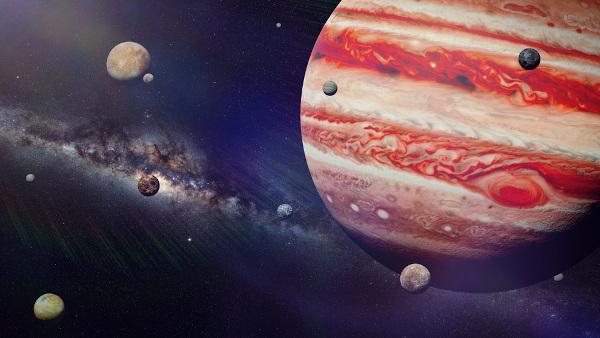The Moon is the natural satellite of planet Earth, distanced by approximately 384,405 km. It is estimated that there are more than 150 Moons in the Solar System, only Neptune has thirteen; Saturn, forty-eight; and Jupiter, sixty-two. The largest Moon in the Solar System is Titan, its size is twice that of the Earth's moon. Our Moon is the only celestial body to receive human beings.
Its diameter is approximately 3,500 km, for this reason its size is 80 times smaller than that of planet Earth. Along the lunar surface no gases such as nitrogen, oxygen or even water are identified.
This celestial body is seen from Earth and exhibits various phases, yet always exhibits the same face. The time taken to perform the rotation movement is the same as for the translation movement. In the rotation movement, the moon rotates around itself, taking 27 days and 7 hours (time equally spent for the translation movement - displacement around the Sun).
The face of the illuminated Moon has a temperature of approximately 127°C, while the non-illuminated face rotates around – 170°C
Unlike planet Earth, the Moon has no atmosphere. The lunar surface remains unharmed for millions of years, except for craters caused by meteorite collisions.
The Moon directly interferes with the tides, because ocean waters are attracted during the orbital displacement of this celestial body.
By Eduardo de Freitas
Graduated in Geography
Do not stop now... There's more after the advertising ;)
Would you like to reference this text in a school or academic work? Look:
SCHOOL, Team Brazil. "Moon"; Brazil School. Available in: https://brasilescola.uol.com.br/geografia/lua.htm. Accessed on June 27, 2021.


